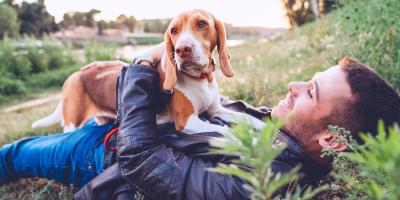
There’s nothing better than taking your furry friend out for a walk in beautiful weather. However, it is important to understand the signs of overheating in dogs, so that you take the correct steps to avoid serious health-related problems. Overheating typically occurs when a dog is without shade, ventilation or water for an extended period of time. It can also occur when your dog is out on a walk with you, has played outside in warm weather, or if your dog is stressed or overexcited.
The dangers of overheating
Rather than sweat through their skin, dogs cool off through panting. As your dog’s body temperature rises, your dog compensates by panting. Panting draws cooler air to the back of the throat and across the tongue, which works to cool the blood circulating the core of your dog.
While panting can work to cool down your dog in the short-term, it is inefficient in lowering body temperature in the long run, because panting uses energy and generates additional heat.
If overheating is not tended to immediately, it can cause serious health problems and can become life threatening. Overheated dogs are at risk of suffering from heat exhaustion or heat stroke.
Signs of overheating in dogs:
- Panting is the most common first sign that a dog is at risk of overheating.
- If the panting escalates to forceful panting, cease all activity with your dog.
- As a dog tires, he becomes less animated and his face may express concern or apprehension.
- A stressed dog may slow his pace and cover less ground.
- Your dog may carry his tail lower and have less tail action.
Preventing overheating
Just because it’s warm outside, that doesn’t mean you can’t bring your dog outdoors with you. There are plenty of things you can do to make sure your dog has a safe time outside during the warmer months of the year.
Hydration and shaded areas
The easiest way to keep your dog cool is to keep your dog hydrated with plenty of fresh water and to keep him in the shade. If you’re planning to take your dog out with you on a hot day, make sure that there’ll be spaces where he can rest properly and rehydrate. Always bring water and a towel with you. A wet towel is a great way to get your dog to cool down.
If your dog is still experiencing signs of overheating after being provided fresh water and being removed from direct sunlight, bring him to your veterinarian immediately.
Carrying a thermometer
If you’re planning on doing training and exercise with your dog, you can take extra precaution by having a thermometer with you. Dogs perform best when their temperature is near 38°C. When their temperature approaches 40°C, they begin to shut down. Make sure to exercise your dog for short periods in warm conditions. Whenever possible, opt to train during the coolest times of the day, avoiding high humidity.
Related articles



